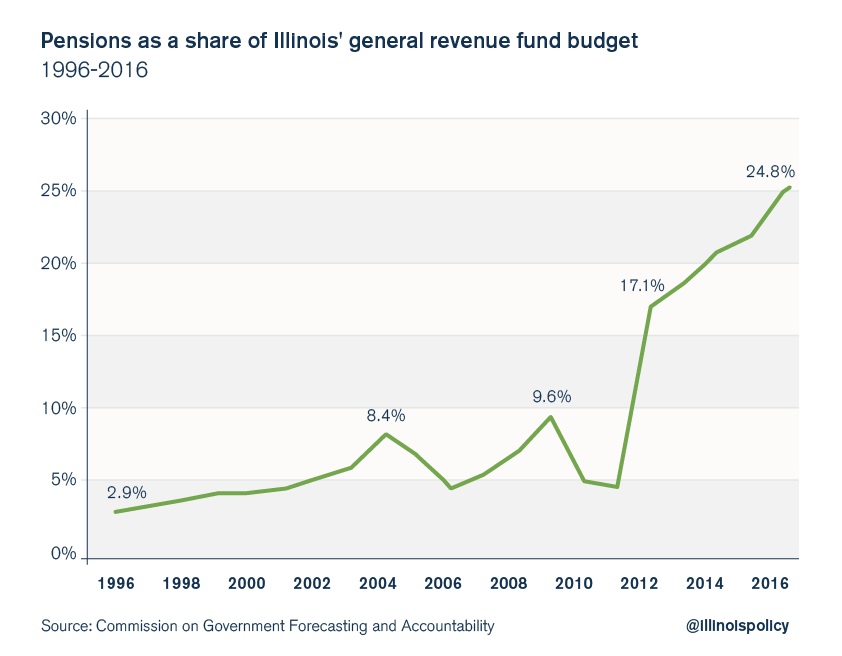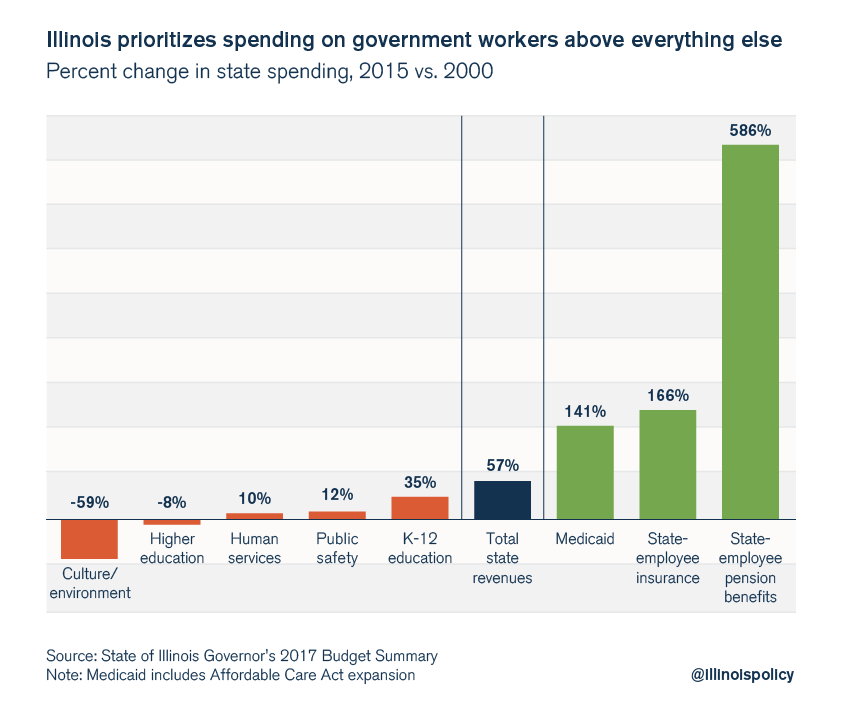Illinois’ stopgap budget spends $8B more than the state takes in
Under the stopgap budget, Illinois will spend $8 billion more than it collects in tax revenues; Illinois needs to enact major reforms to rein in its out-of-control spending and avoid billions in tax hikes.
Illinois House Speaker Mike Madigan called Gov. Bruce Rauner’s push for reforms extreme when speaking with a reporter July 27 at the Democratic National Convention. Madigan said, “Democrats are like most Illinoisans, they are not happy with the extremism of Bruce Rauner.”
But there’s nothing extreme about Rauner’s reform proposals in light of the economic and fiscal mess Madigan has created during his three-plus decades of leadership in the General Assembly. Illinoisans are suffering under the nation’s third-worst business climate, a shrinking population, the nation’s third-highest unemployment rate, a collapsing manufacturing sector, the nation’s worst pension crisis, the worst credit rating of any state and the nation’s highest property taxes.
What is extreme is the stopgap budget Madigan took pride in passing in June. The speaker said the nearly $40 billion stopgap budget was only possible because it didn’t include any of the governor’s economic and spending reforms: “We can pass a budget when the governor’s demands …. are dropped.”
Madigan got what he wanted: “compromise.” In one fell swoop, Illinois politicians hiked spending by $4 billion to $39.6 billion – a 12 percent increase – despite the fact that tax revenues will total just $31.8 billion in the new fiscal year.
And without Rauner’s reforms, Madigan will look to plug the budget’s projected $8 billion deficit with massive tax hikes.

Illinois budget deficit spikes to $8 billion
Source: Commission on Government Forecasting and Accountability
The failure of Illinois lawmakers to pass a fiscally responsible budget for fiscal year 2016 was considered the height of recklessness and the low point in Illinois finances. The state muddled through with no budget for the entire year, yet lawmakers spent $4 billion more than they collected in taxes.
But now, with a stopgap budget finally in place for the new fiscal year, the government’s own analysts say the state is on pace to overspend by nearly $8 billion in fiscal year 2017.
And per Madigan’s insistence, there were no reforms in the stopgap budget. Two of Illinois’ biggest potential reforms were left out: changes to state-worker pensions and reforms for how the state doles out health care for government workers. Those two items alone have grown massively in the past 15 years.
Pension costs alone now consume a fourth of the state’s budget, dramatically crowding out spending on core services such as higher education, human services and public safety.

In fact, between 2000 and 2015, total spending on pensions alone grew by 586 percent, or $6.6 billion.
By contrast, spending on higher education shrank by 8 percent over that same time period, while human services spending increased only 10 percent.

If politicians like Madigan really cared about the poor and the middle class they claim to champion – as the speaker mentioned again and again in his remarks – they would have slowed the growth in government-worker costs long ago. Instead, time and again Illinois politicians have revealed their true spending priority: funding for state-worker pay and benefits at the expense of everything else.
To get the stopgap passed, Madigan used the threat of school closures and collapsing social services to force a massive spending plan onto taxpayers.
And only after the November elections have come and gone will Madigan try to pay for that $8 billion stopgap deficit by forcing a tax hike on all Illinoisans.
That’s his way of hoping to avoid accountability. Spend first. Tax later.
But tax hikes are not the solution for Illinois; they’ll only make things worse.
What’s most telling about the stopgap budget is how Madigan and Rauner each reacted to the agreement they signed – one happy, the other reluctant.
Madigan gloated that he had blocked Rauner’s reforms. “We have seen with previous successful budget efforts that we can come together, achieve compromise and pass a budget.”
Madigan wants to keep Illinois’ disastrous status quo intact – and has in fact made it worse by pushing an even bigger deficit.
Rauner, on the other hand, sees the fiscal crisis that necessitated the stopgap as “the bottom” and “the low point in the evolution of Illinois,” and explained, “This is not a balanced budget. This is not a solution to our long-term challenges. This is a bridge to reform.”
The state’s financial crisis will cease only when politicians are brave enough to reject the failed status quo – which means structurally overhauling Illinois’ finances by passing comprehensive spending, pension and economic reforms.
Lawmakers can start by moving new state workers to 401(k)-style plans and giving existing workers an optional 401(k)-style plan, fixing Illinois’ broken workers’ compensation system and freezing local property taxes while giving local governments more control over their collective bargaining agreements. Such reforms will set Illinois on a fiscally sustainable path and help return government to a level that’s affordable for taxpayers.

